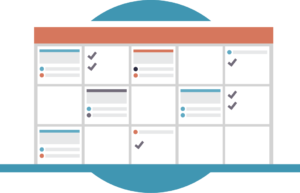 One of the most common questions we get from members is, “How do I increase the value and the volume of member engagement?” This challenge persists across all community types, sizes and use cases. One way we’ve found to increase audience engagement, in terms of both quality and quantity, is to implement an editorial calendar for your community programming.
One of the most common questions we get from members is, “How do I increase the value and the volume of member engagement?” This challenge persists across all community types, sizes and use cases. One way we’ve found to increase audience engagement, in terms of both quality and quantity, is to implement an editorial calendar for your community programming.
Earlier this year Georgina Cannie shared some best practices for creating an editorial calendar with members of TheCR Network. In addition to the practical tips she outlined, she also gave a great overview of the benefits of building and maintaining and editorial calendar. I wanted to share her great advice here, for any community managers considering the process.
Stability + Freshness
When you implement an editorial calendar you formally introduce a cyclical timeframe into your community program. These program and content anchors provide increased familiarity and stability to your members. Now, they know what’s going on, what to expect and when to expect it. Since the topic of each cycle is shifting and different collaborators are used, you can create a space for fresh content without confusion. Consider the success of widespread reoccurring events – like the popular Throwback Thursday (#tbt) on social media.
Don’t Reinvent the Wheel
By maintaining the same time and program structure in each editorial cycle, your community team (or you!) doesn’t have to create fresh content plans each week. A program template has been designed and content is plugged into it, which allows the community manager to focus on the value and the curation of the content itself.
Listening + Response Channels
By implementing this structure, the behavior of catering to passing member interests is no longer detrimental to the community effort or the community manager time due to positive reactivity. The shifting topic cycle is the perfect excuse for a community manager to act on community listening and plug-in what members are asking for without disrupting the entire framework. While it might seem like a lot of work in the beginning, an editorial calendar actually frees up your time in the long run to provide better content to your members.
Do you currently use an editorial calendar in your community program planning? What benefits have you found to introducing this structure into your day-to-day community work?
